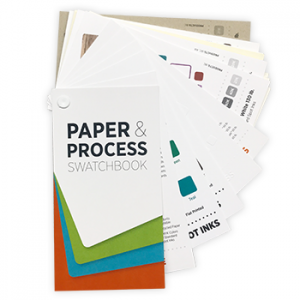 Print has a lot of features that can be replicated on a digital screen, but one feature simply must be experienced in person: texture. Texture might be a nearly unphotographable element of your customer’s print order, but whether your customer is looking for a glossy finish or subtle elegance, stock texture is an essential part of their print pieces.
Print has a lot of features that can be replicated on a digital screen, but one feature simply must be experienced in person: texture. Texture might be a nearly unphotographable element of your customer’s print order, but whether your customer is looking for a glossy finish or subtle elegance, stock texture is an essential part of their print pieces.
So, how can your customers use texture in their print orders?
Wove
Paper with a wove finish is one that has no specially manufactured texture, which results in a smooth stock good for everyday use. Wove is a low-key texture that lets other elements of your customer’s design take center stage.
Linen
Linen paper has a look and feel reminiscent of fine linen fabric. The texture of linen paper is a crosshatch pattern similar to the feel of woven fabric. This fabric-like texture is a great fit for customers looking to create a classic, elegant look for their print and to show off the quality of their business. Consider this stock for personal stationery, business letterhead, or even menus for restaurants looking to convey a sense of quality.
Laid
Laid is a finish that emulates the look of fine hand-crafted paper. This stock texture is made up of fine ribs known as “chain lines.” These lines are created using a wire cylinder called a “dandy roll” that presses the pattern into the paper during the manufacturing process. Like linen papers, laid papers have a classic appeal that are ideal for letterhead or other print pieces that your customers need to feel important or authoritative like reports, presentations, and official business communication.
Coated
Coated stock creates a smooth, often glossy texture. If your customers aren’t familiar with coated stock by name, they’re probably familiar with it due to its common usage in mailings, magazines, and other glossy print pieces. Not only does coating create a smooth texture, glossy coating also gives the color additional depth and adds a sleek shine that is a good fit for designs featuring photographs and for other marketing pieces.
Want to give your customers an even more up close and personal look at their options for stock textures? Be sure to have your swatch book on hand when they order. Not only will this be a great introduction to stock textures, but it also
How do your customers use different stock textures? We’d love to hear more about their favorites in the comments below.